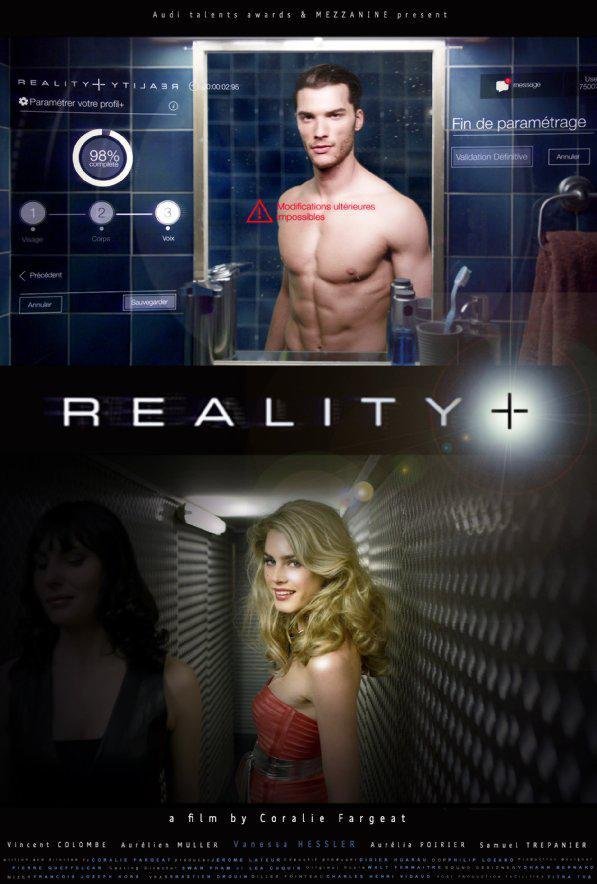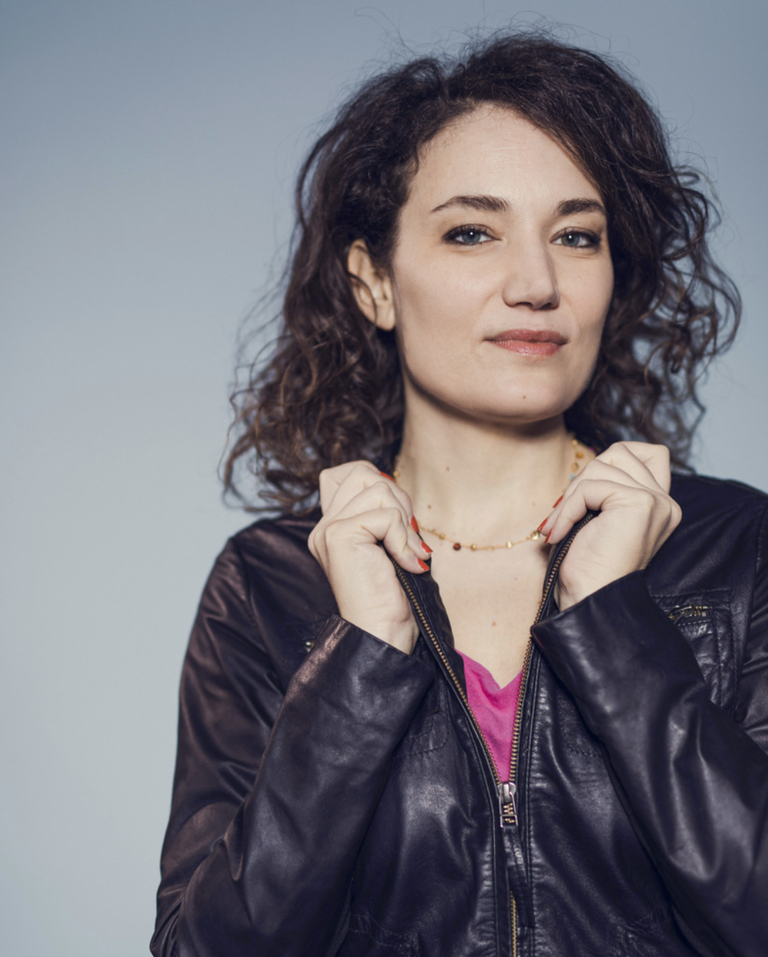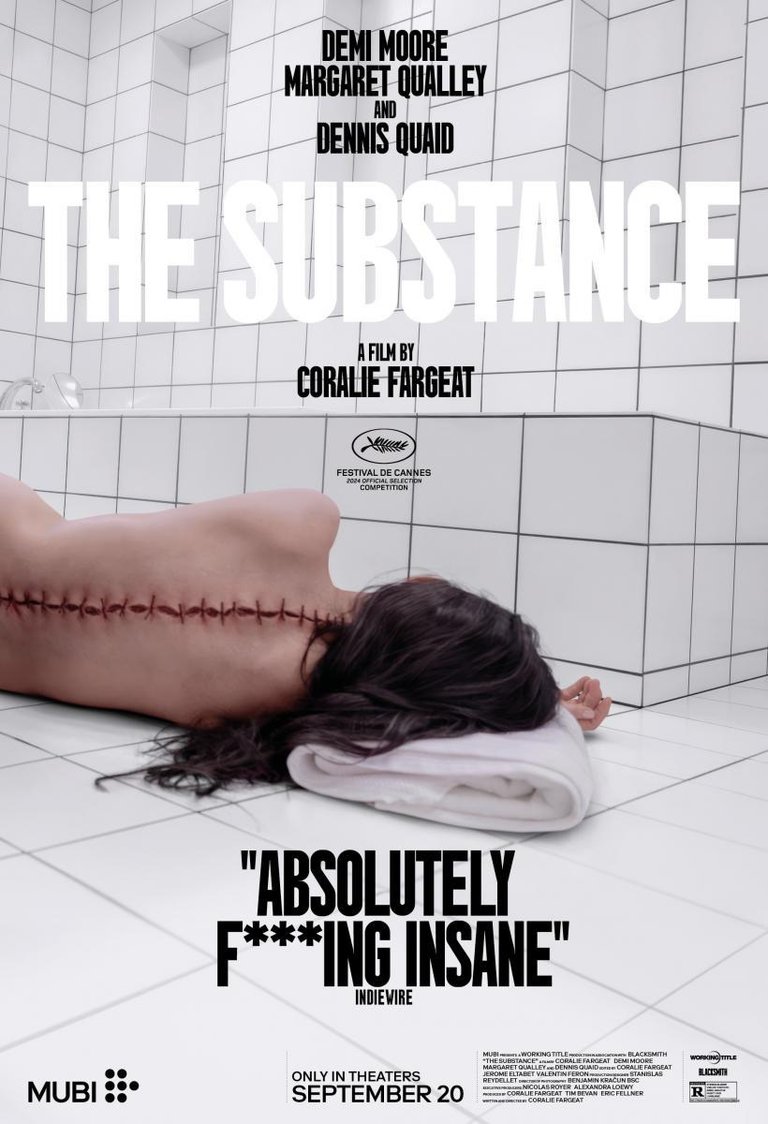Reality+ (2014): the seed of "The Substance" | la semilla de "La Sustancia"

Un cortometraje que creció diez años más tarde
Coralie Fargeat, the writer and director of The Substance, starring Demi Moore and Margaret Qualley, has been in the news a lot over the past few months, not only because it won the Best Screenplay award at the Cannes Film Festival but also because of the impact it has had on the big screen and in the public's opinion after its international release. Many have loved and praised it while others have condemned its savagery and excess, but no one has been indifferent to Fargeat's original story and isn't that a success in itself?
Durante los últimos meses ha sonado mucho el nombre de Coralie Fargeat, guionista y directora de The Substance, protagonizada por Demi Moore y Margaret Qualley, no sólo por haber obtenido el premio a Mejor Guión en el Festival de Cannes sino por la repercusión que ha tenido en las carteleras y en la opinión del público tras su estreno internacional. Muchos la han amado y alabado mientras otros han condenado su salvajismo y su exceso, pero nadie ha quedado indiferente ante la original historia de Fargeat y ¿no es eso un éxito en sí mismo?
The story of Elisabeth (Demi Moore) and her obsession with regaining beauty and youth impressed us and The Substance is striking because it tells something different in a way that seems novel. It's about the myth of eternal youth, the ghost of Dorian Gray, linked to the story of Bluebeard, Dr. Jekyll, with a lot of body horror and a bit of science fiction. And yet, ten years ago, the same Coralie Fargeat had told us the same story. Or well, almost. Or to be more specific, another story that has the same foundations as the production that has gone around the world in recent months. In Reality+, the short film written and directed by Fargeat in 2014, we are told the story of Vincent, a man in his early thirties (at least that's how old I think he is) who installs a chip in his brain to alter the perception of his reality - both the way he perceives it and the way others perceive him - temporarily. We know that on social media we show an improved image of ourselves. There are those who are capable of creating fake profiles, with other people's photographs of more attractive men or women to make a better impression because, let's face it, we live in a world where physical beauty has great value and can be a safe passage or a gateway to an opportunity. However, off-screen, in the real world we cannot wear that virtual mask, but what if we could? If you could walk down the city streets and have everyone see you as you would like to be seen, wouldn't you do it?
La historia de Elisabeth (Demi Moore) y su obsesión por la recuperación de la belleza y la juventud nos impresionó y The Substance resulta llamativa porque cuenta algo diferente en una forma que nos parece novedosa. Se trata del mito de la eterna juventud, el fantasma de Dorian Gray, ligado a la historia de Barba Azul, el Dr. Jekyll, con mucho de body horror y un poco de ciencia ficción. Y sin embargo, diez años atrás, la misma Coralie Fargeat nos había contado la misma historia. O bueno, casi. O para ser más específico, otra historia que tiene los mismos cimientos que la producción que le ha dado la vuelta al mundo en los últimos meses. En Reality+, el cortometraje que escribió y dirigió Fargeat en 2014, se nos cuenta la historia de Vincent, un hombre en sus treinta y pocos años (al menos esa es la edad que creo que tiene) que se instala un chip en su cerebro para alterar la percepción de su realidad - tanto la que él percibe como la forma en que los demás lo perciben a él - de manera temporal. Sabemos que en las redes sociales mostramos una imagen mejorada de nosotros. Hay quienes son capaces de crear perfiles falsos, con fotografías ajenas de hombres o mujeres más atractivas para causar mejor impresión porque, hay que admitirlo, vivimos en un mundo en el que la belleza física tiene un gran valor y puede ser un salvoconducto o una puerta de entrada a una oportunidad. Sin embargo, fuera de la pantalla, en el mundo real no podemos llevar puesta esa máscara virtual, pero ¿y si se pudiera? Si se pudiera caminar por las calles de la ciudad y que todos te vieran como a ti te gustaría que te vieran ¿acaso no lo harías?

This is how Reality+ works, the chip that Vincent has installed in his body: it gives him the opportunity to look like a younger and more attractive man in the eyes of other users of the system. It doesn't alter his body, it only makes others see him the way he configures his avatar. It's as if we could create a character in The Sims and show it off in the real world and everyone who did the same could see these avatars of others.
Así funciona Reality+, el chip que Vincent se hace instalar en su cuerpo: le brinda la oportunidad de lucir como un hombre más joven y atractivo ante los ojos de los demás usuarios del sistema. No altera su físico, sólo hace que los demás lo vean de la forma en que él configura su avatar. Es como si pudiéramos crear un personaje en Los Sims y lucirlo en el mundo real y todos los que hicieran lo mismo pudieran ver estos avatares de los demás.
The consequence is that the city becomes a kind of three-dimensional chat room in which people wear their virtual skins as if it were a huge carnival, which further accentuates this cult of beauty and reinforces the importance of appearances. However, there's one detail to take into account: the activation of your appearance only lasts 12 hours and then the brain must rest for 12 more hours before being able to activate the chip again. Of course, this is a limitation that doesn't seem a big deal at first, but when Vincent meets Stella, a beautiful blonde who works in a café, and wants to spend more time with her, he's tempted to consider a risky intervention in which - according to a friend - it's possible to release the chip so that it works 24/7. That is, he will be perceived as that handsome young man that he configured in his system day after day without interruptions, but will he have the courage to do it? Those who have already seen The Substance will have recognized in this brief plot some similarities and a few differences that, deep down, are not such, because they deal with more or less the same concepts, but taken to a further level, as if in Reality+ Coralie Fargeat had acted with greater caution or had reserved some limits and in The Substance she had completely freed herself without putting the brakes on her imagination, her writing and her characters.
La consecuencia es que la ciudad se convierte en una especie de sala de chat tridimensional en la que las personas usan sus pieles virtuales como si se tratase de un enorme carnaval, lo que acentúa aún más ese culto a la belleza y refuerza la importancia de las apariencias. Sin embargo, hay un detalle a tener en cuenta: la activación de tu apariencia sólo dura 12 horas y luego el cerebro debe descansar durante 12 horas más antes de poder volver a activar al chip. Por supuesto, eso es una limitante que no parece mayor cosa al principio, pero cuando Vincent conoce a Stella, una hermosa rubia que trabaja en un café, y quiere pasar más tiempo con ella, se ve tentado a considerar una riesgosa intervención en la que - según le cuenta un amigo - es posible liberar el chip para que funcione 24/7. Es decir, será percibido como ese apuesto joven que configuró en su sistema día tras día sin interrupciones, pero ¿tendrá el valor de hacerlo? Quienes ya han visto The Substance habrán reconocido en esta breve trama algunas semejanzas y unas pocas diferencias que, en el fondo, no son tales, porque se tratan más o menos de los mismos conceptos, pero llevados a un nivel más allá, como si en Reality+ Coralie Fargeat hubiera obrado con mayor cautela o se hubiera reservado algunos límites y en The Substance se hubiera liberado completamente sin poner freno a su imaginación, su escritura y sus personajes.
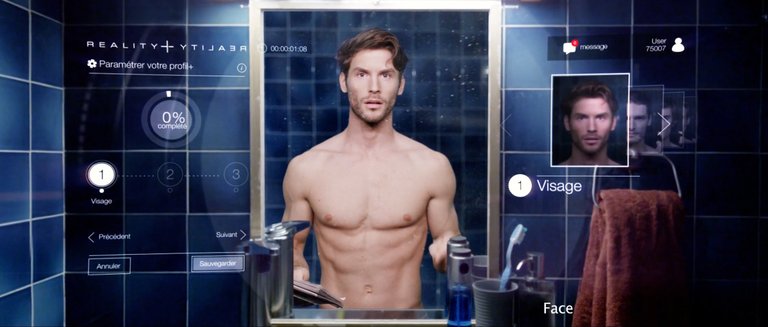
What in the short film is just a change of appearance, a virtual skin that is projected, in The Substance is materiality, corporeality. What in Reality+ is an avatar of your own self, in the film is a corporal dissociation that, however, maintains the unity of the person. What in the first has a romantic nuance, in The Substance is transformed into the use and abuse of the human body and into free sex. In every sense, the feature film is wilder, deeper, more daring, more uncomfortable, less modest and that expands the limits of the story told ten years ago in Reality+.
Lo que en el cortometraje es sólo un cambio de apariencia, una piel virtual que se proyecta, en The Substance es materialidad, corporeidad. Lo que en Reality+ es un avatar sobre tu propio yo, en la película es una disociación corporal que, sin embargo, mantiene la unidad de la persona. Lo que en el primero tiene un matiz romántico, en The Substance se transforma en el uso y abuso del cuerpo humano y en sexo libre. En todos los sentidos, el largometraje es más salvaje, más profundo, más atrevido, más incómodo, menos pudoroso y eso expande los límites de la historia contada diez años atrás en Reality+.
In both cases there's the possibility of transgressing the initial agreement, of increasing the duration of the illusion (what here are 12 hours in The Substance are 7 days) and in both cases there's a surgery (although the scar on Demi Moore's back is significantly larger and more grotesque), but where the terror of a nightmare stops Vincent from jumping into the void, Elisabeth (Demi Moore's character in The Substance) is pushed precisely into that free fall towards her disappearance. Finally, the most important difference, although it seems a minor detail, is the fact that the protagonist here is a male, while in The Substance it's a woman. Men and women are victims of a society in which there's an undeniable cult of beauty and we want to be more attractive, look better, be more physically desirable to others (that's why the surgeries, the gyms, the beauty treatments), but it cannot be denied that this burden is heavier for women in most cases. Female beauty is on the one hand a value that gives great power, but on the other, it sometimes feels like a requirement in which a woman must always look beautiful, dress in a certain way, wear her hair like this, or wear high heels as if we were still in the era in which the wife, the partner, or the woman, was a simple ornament, supported by her appearance, without needing her essence. Regardless of whether or not you have seen The Substance, you can go to MUBI and check out Reality+, which in 15 minutes can lead you to reflect on the same themes as the film, but with less body horror and a more... happy ending? Have you heard of this short film? I'll read you in the comments.
En ambos casos existe la posibilidad de trasgredir el acuerdo inicial, de aumentar la duración de la ilusión (lo que aquí son 12 horas en The Substance son 7 días) y en ambos casos hay una cirugía (aunque la cicatriz en la espalda de Demi Moore es significativamente más grande y grotesca), pero en donde el terror de una pesadilla detiene a Vincent antes de lanzarse al vacío, a Elisabeth (personaje de Demi Moore en The Substance) la empuja precisamente a esa caída libre hacia su desaparición. Finalmente, la diferencia más importante, aunque pareciera un detalle menor, es el hecho de que el protagonista acá es masculino, mientras que en The Substance es una mujer. Hombres y mujeres somos víctimas de una sociedad en la que existe un innegable culto a la belleza y deseamos ser más atractivos, vernos mejor, resultar físicamente más deseables para el resto (por eso las cirugías, los gimnasios, los tratamientos de belleza), pero no se puede negar que esa carga resulta más pesada para las mujeres en la mayoría de los casos. La belleza femenina es por un lado un valor que entrega un gran poder, pero por el otro, se siente a veces como una exigencia en la que una mujer debe lucir siempre bella, vestir de tal o cual forma, llevar el cabello así, o usar zapatos de tacón como si todavía estuviéramos en la época en la que la esposa, la pareja, o la mujer, era un simple adorno, sostenido por su apariencia, sin necesitar de su esencia. Indiferentemente de si han visto o no The Substance, pueden ingresar a MUBI y revisar Reality+, que en 15 minutos los puede conducir a reflexionar sobre los mismos temas que la película, pero con menos body horror y un final más... ¿feliz? ¿ustedes habían oído de este cortometraje? Los leo en los comentarios.
Reseñado por @cristiancaicedo
Other posts that may interest you | Otros posts que pueden interesarte:
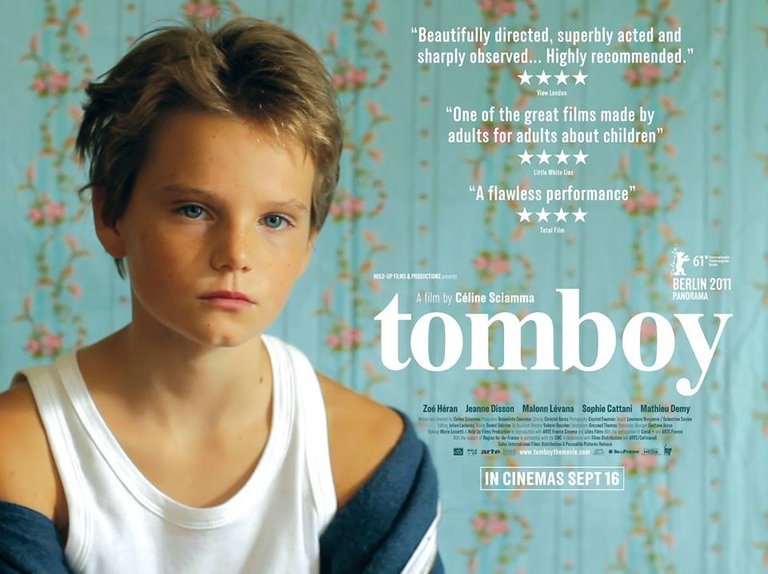   |
|---|
